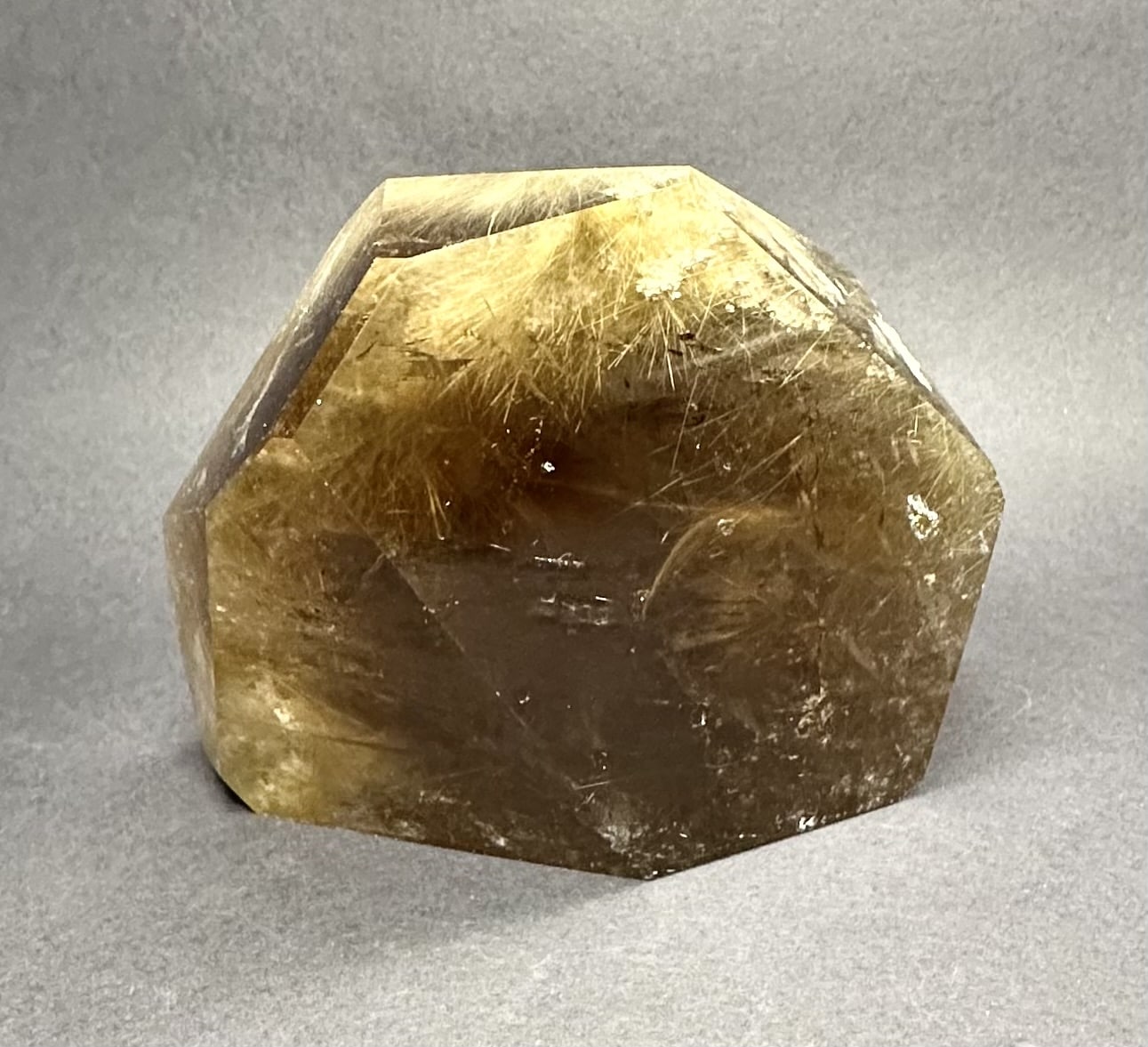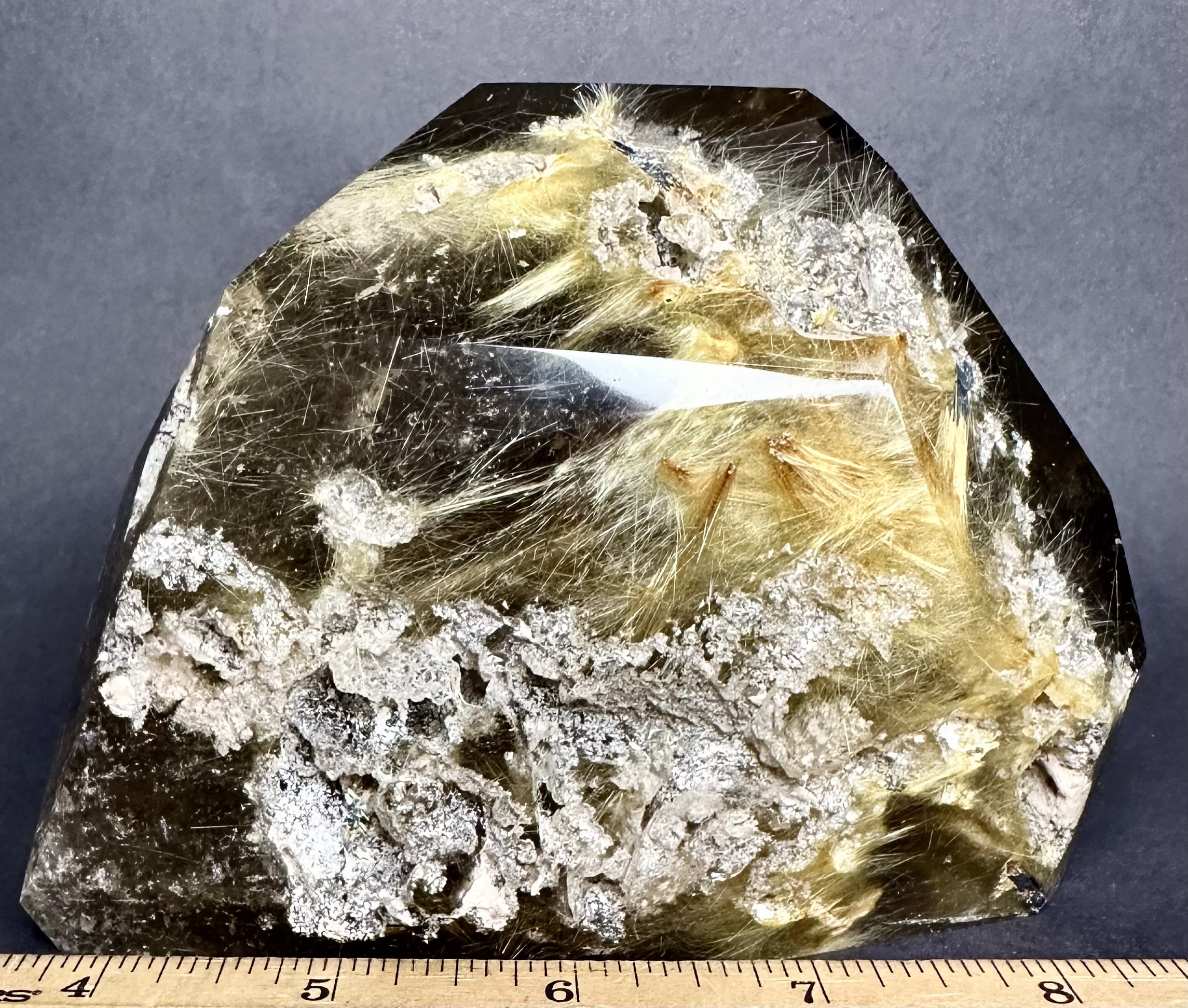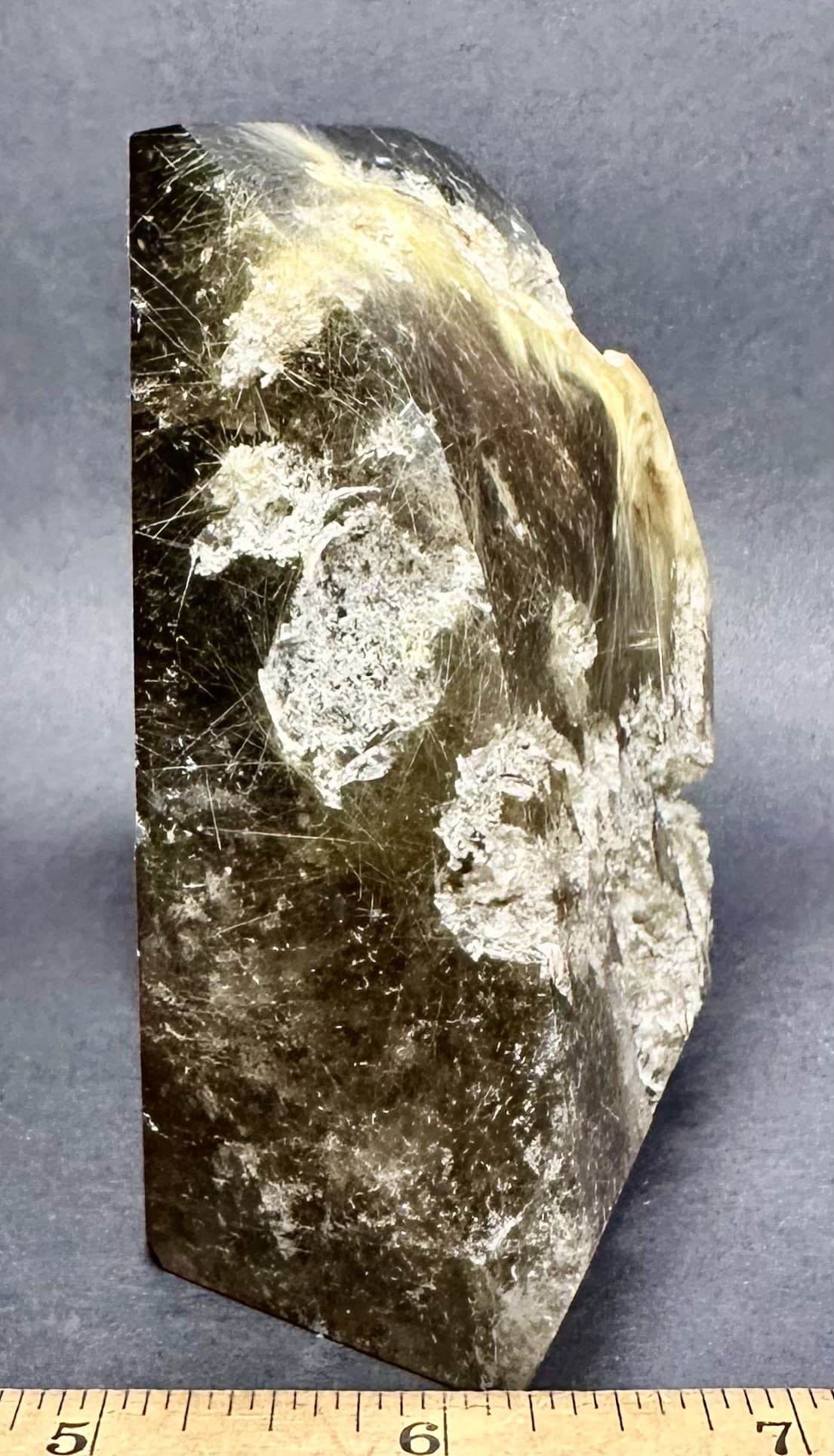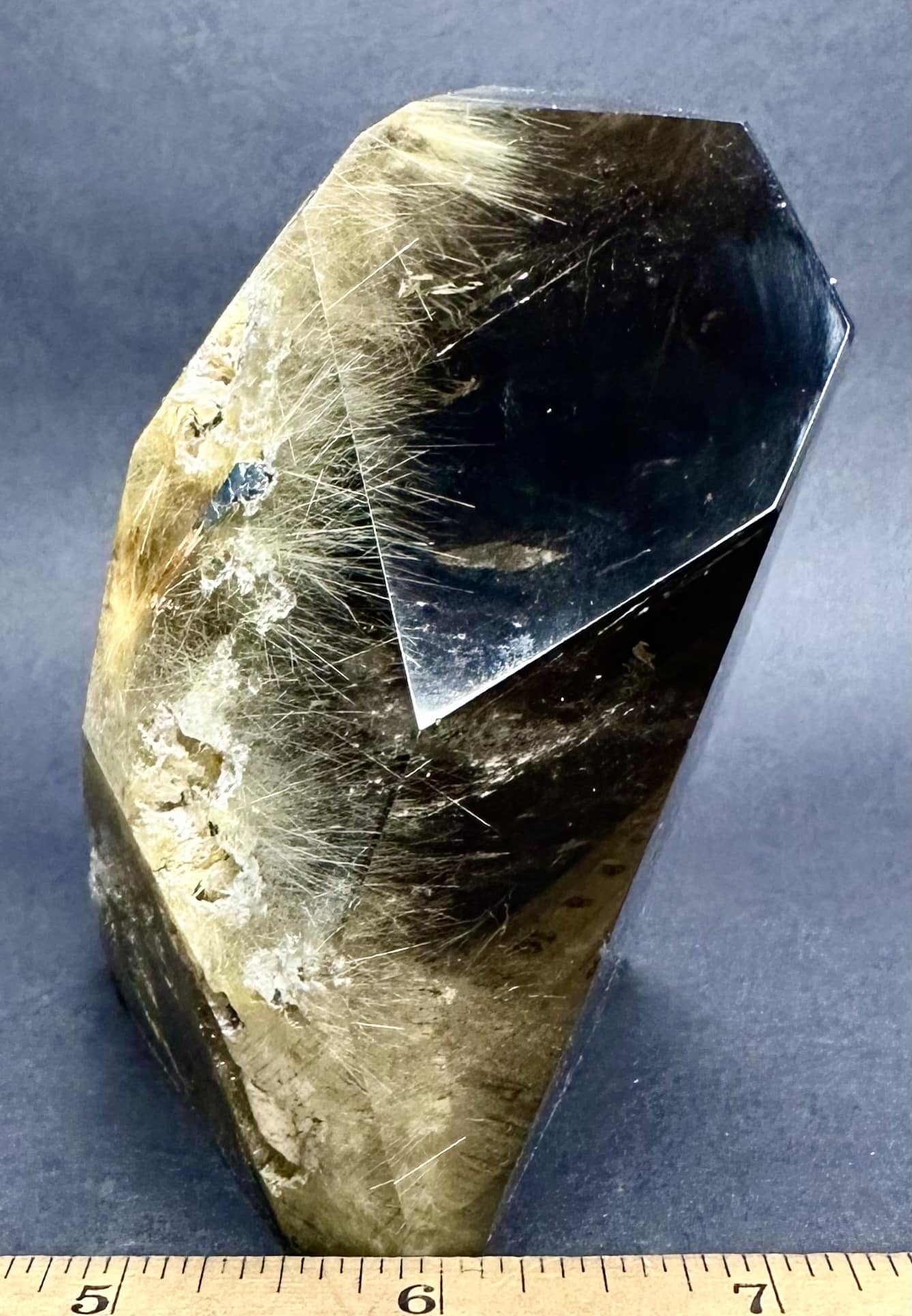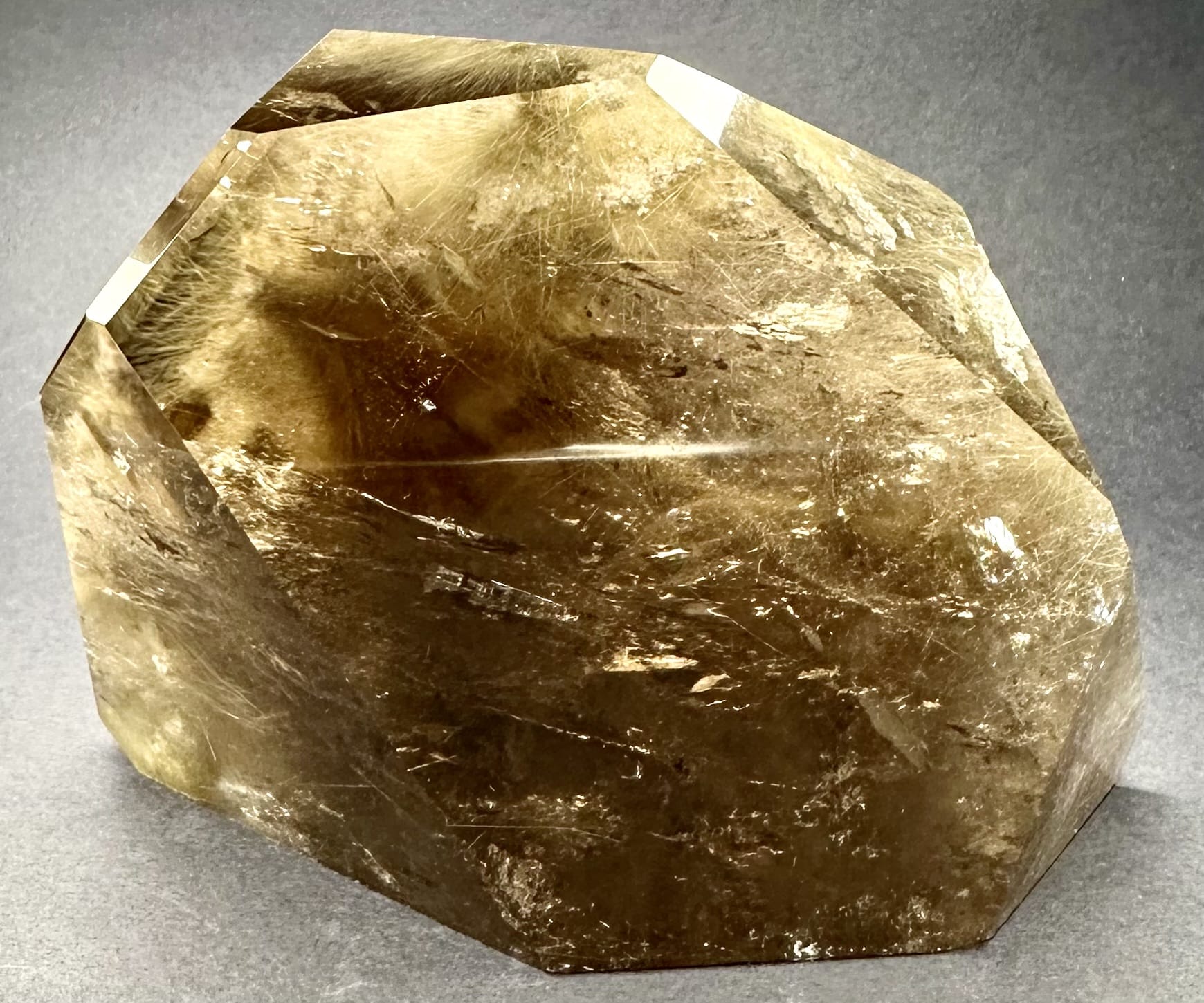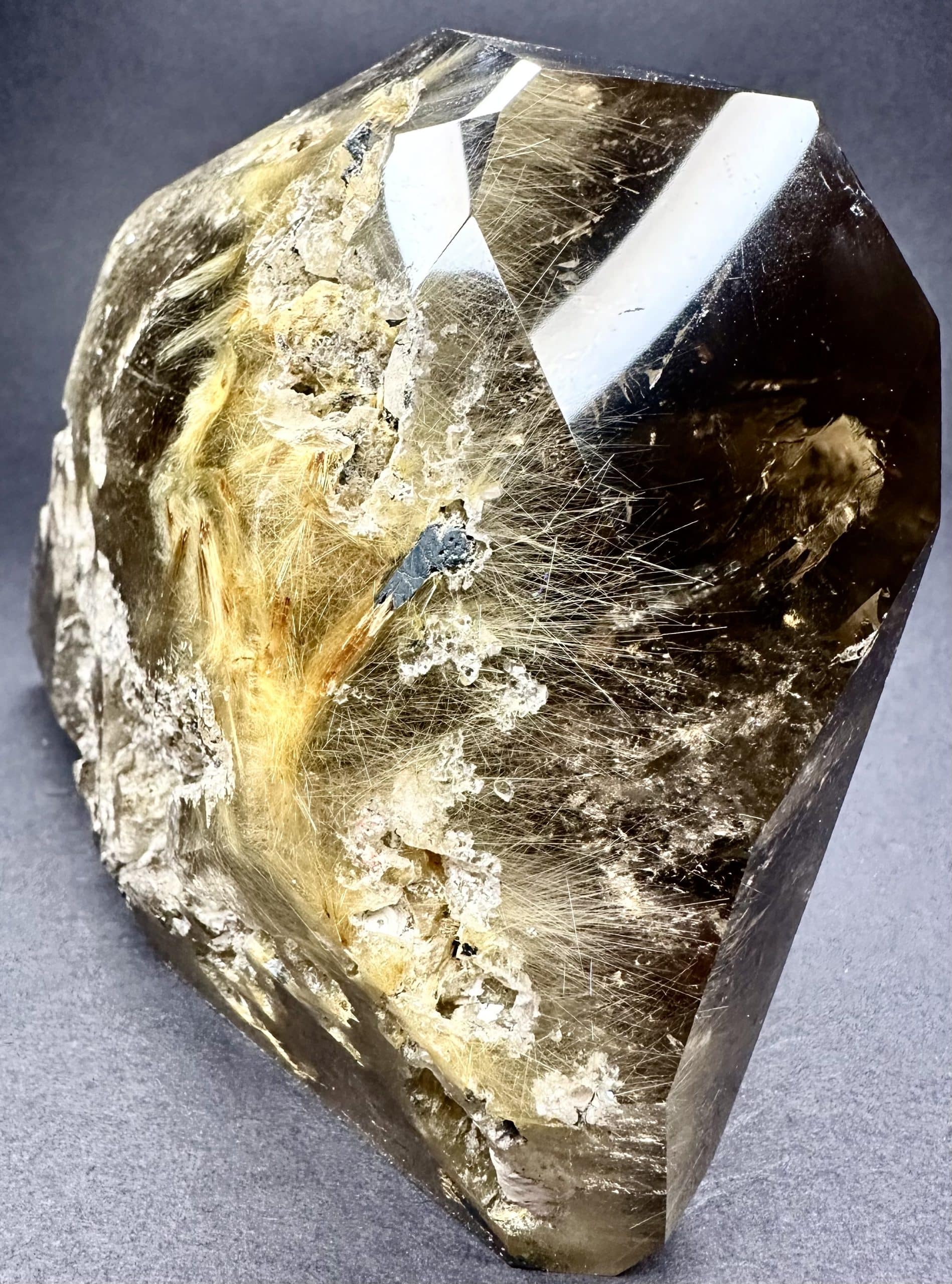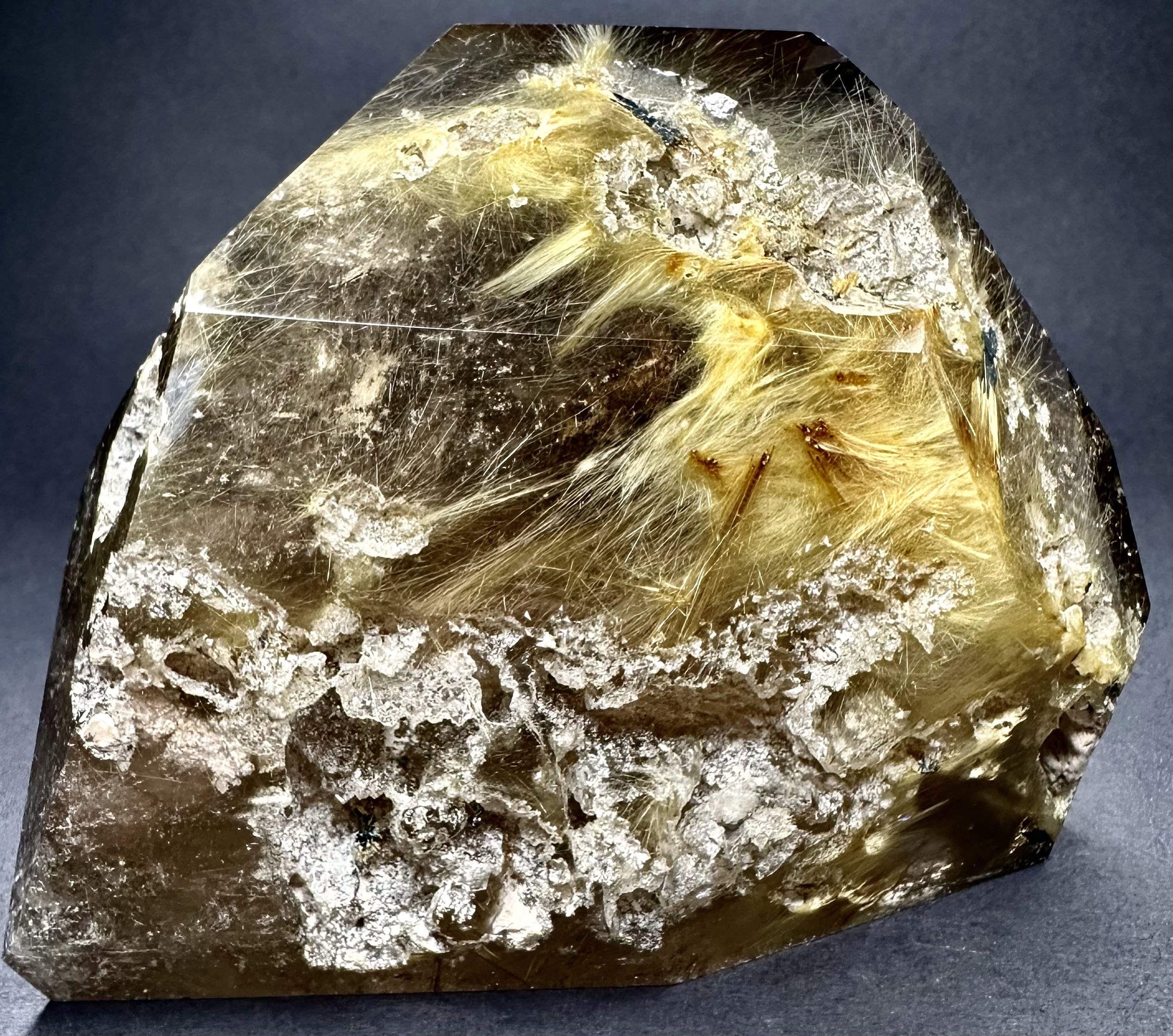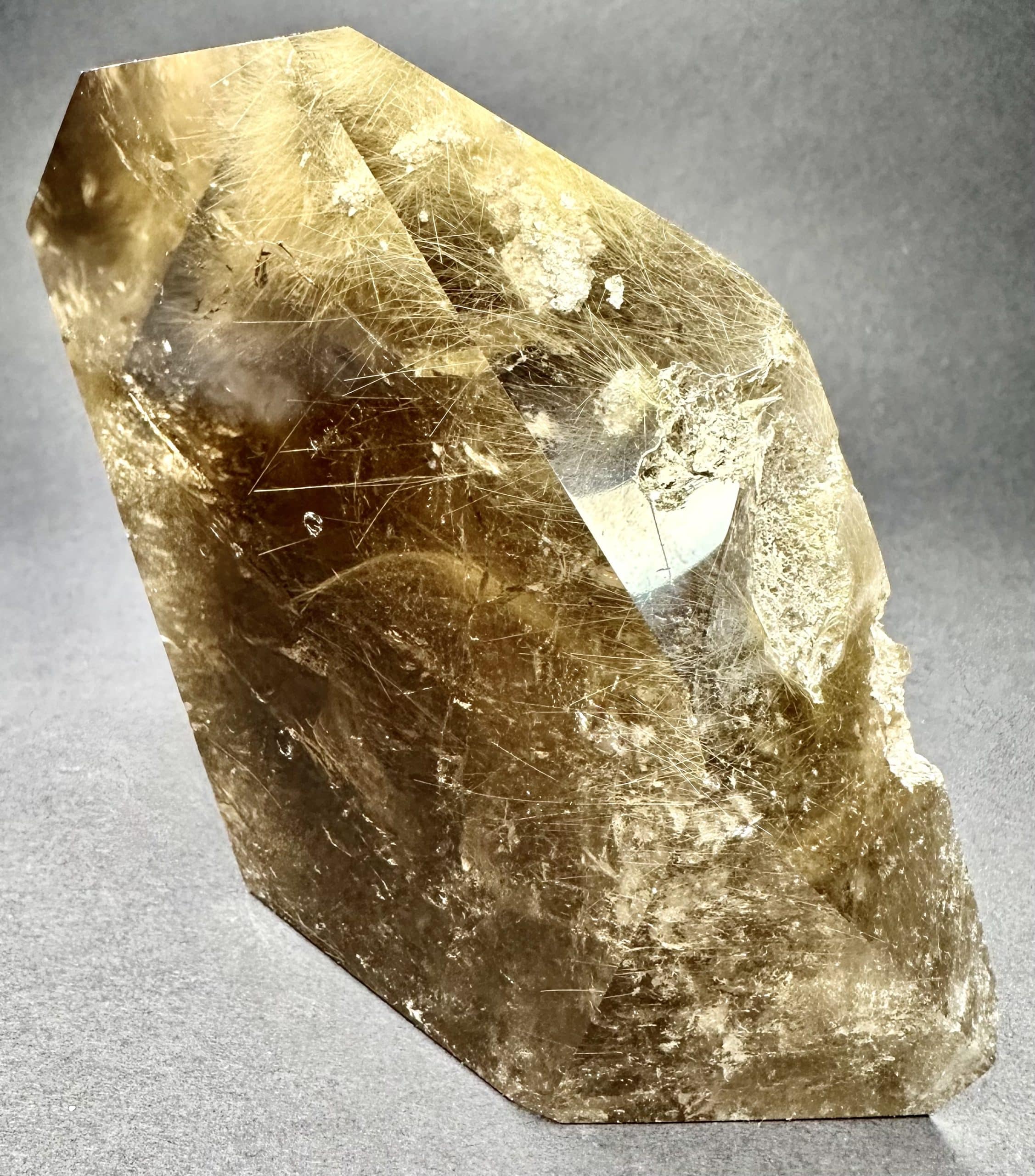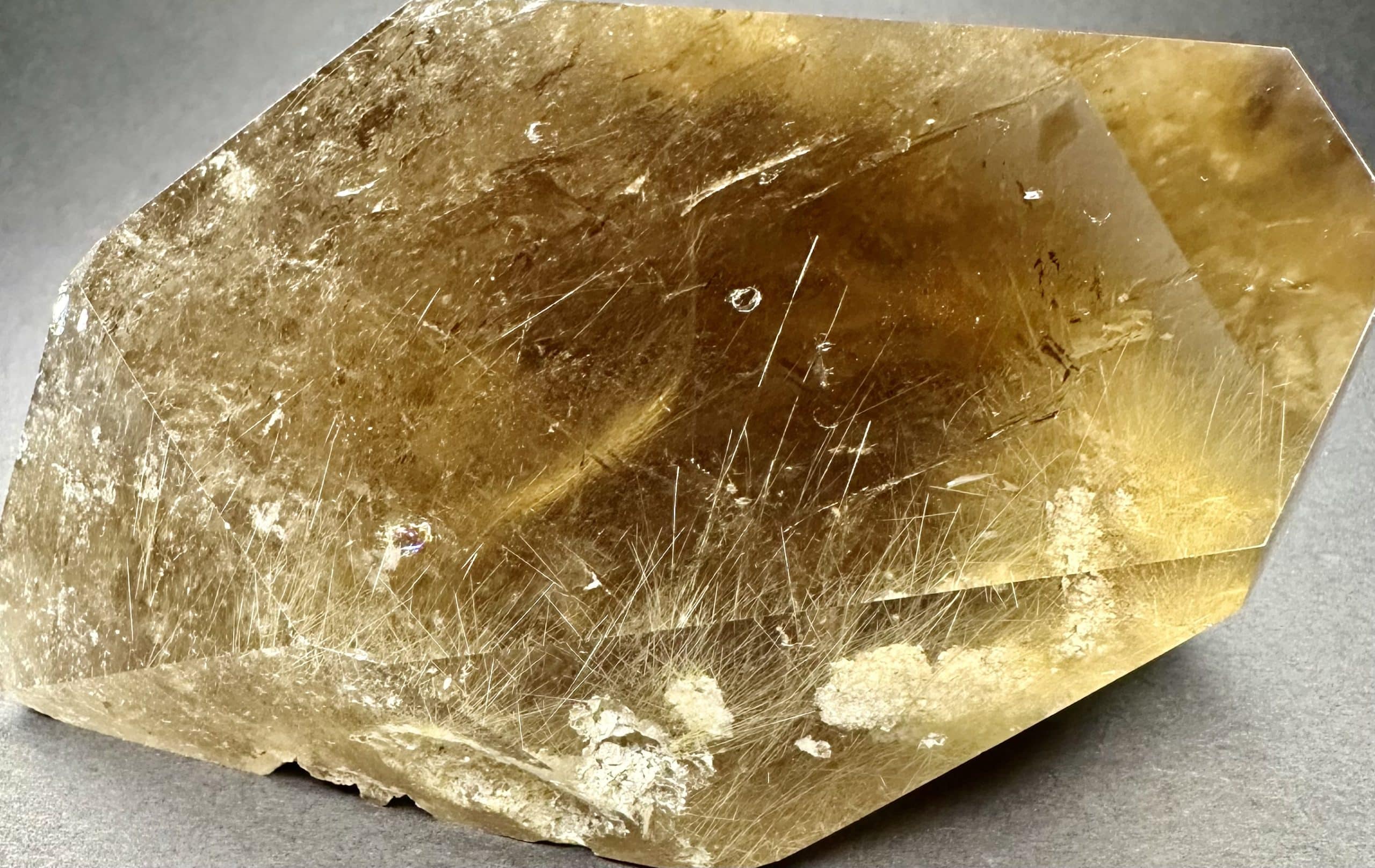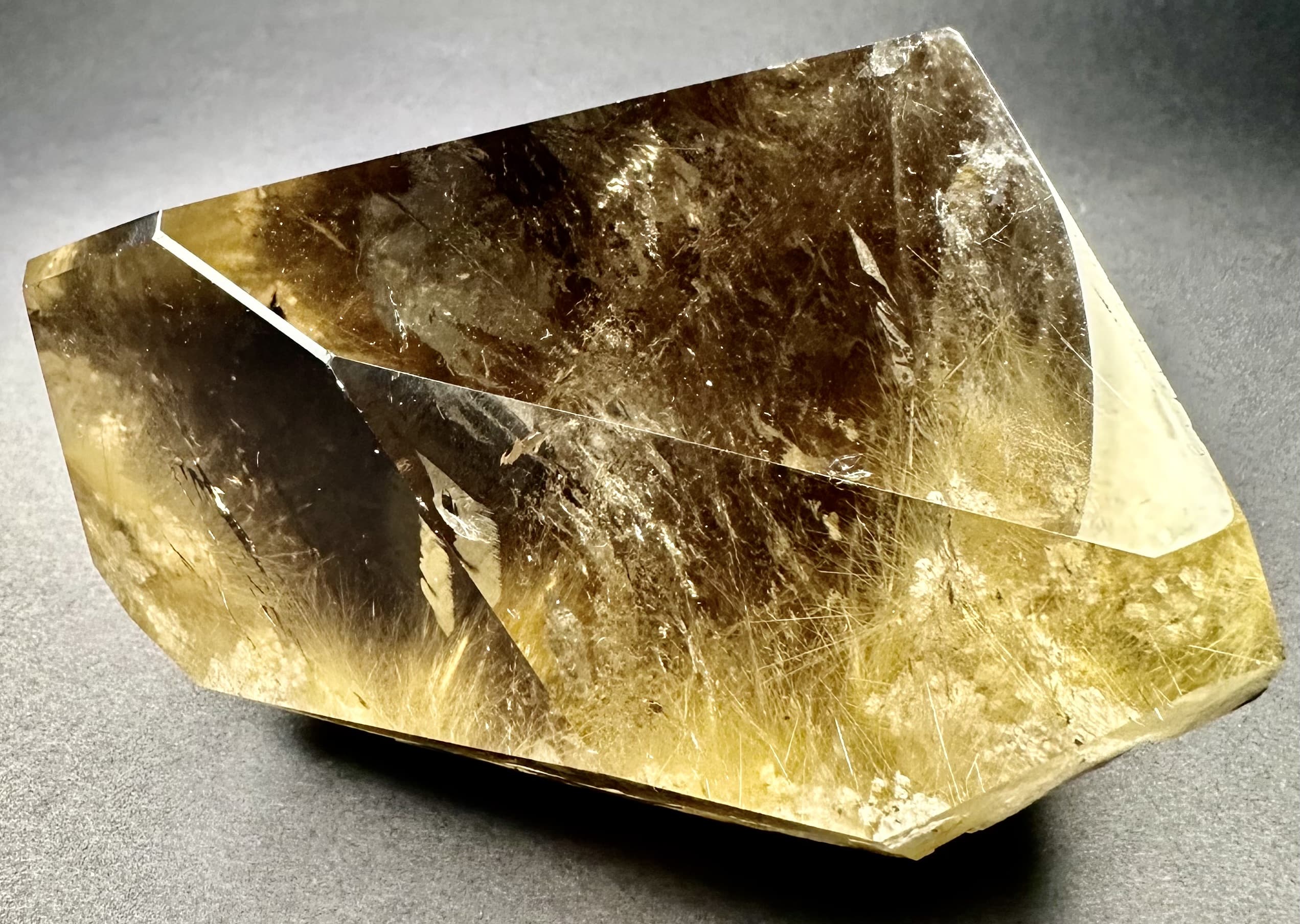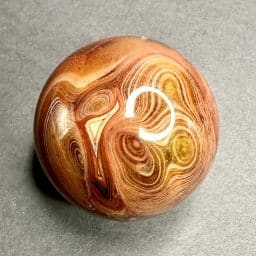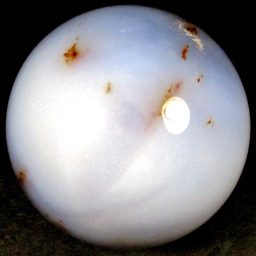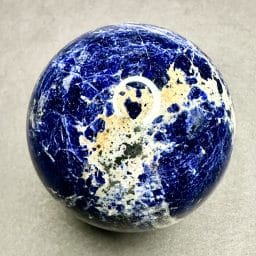Description
Quartz is the second most common mineral in the Earth’s continental crust. It is mainly composed of Silica or Silica based minerals. Although Quartz is known by a variety of names, the most important distinction between types of Quartz is that of macro-crystalline, individual crystals visible to the unaided eye, and micro-crystalline, where aggregates of crystals are only visible under high magnification. There are many forms of Quartz including Chalcedony, Amethyst, Citrine, and Carnelian which are results of mineral impurities or heat treatments.
Rutile is a mineral composed primarily of Titanium Dioxide. Rutile has among the highest refractive indices of any known mineral and also exhibits high dispersion. Rutile is known to contain up to 10% Iron as well as significant amounts of Niobium and Tantalum. Rutile creates small needles within crystals that can be seen when held up to light.
